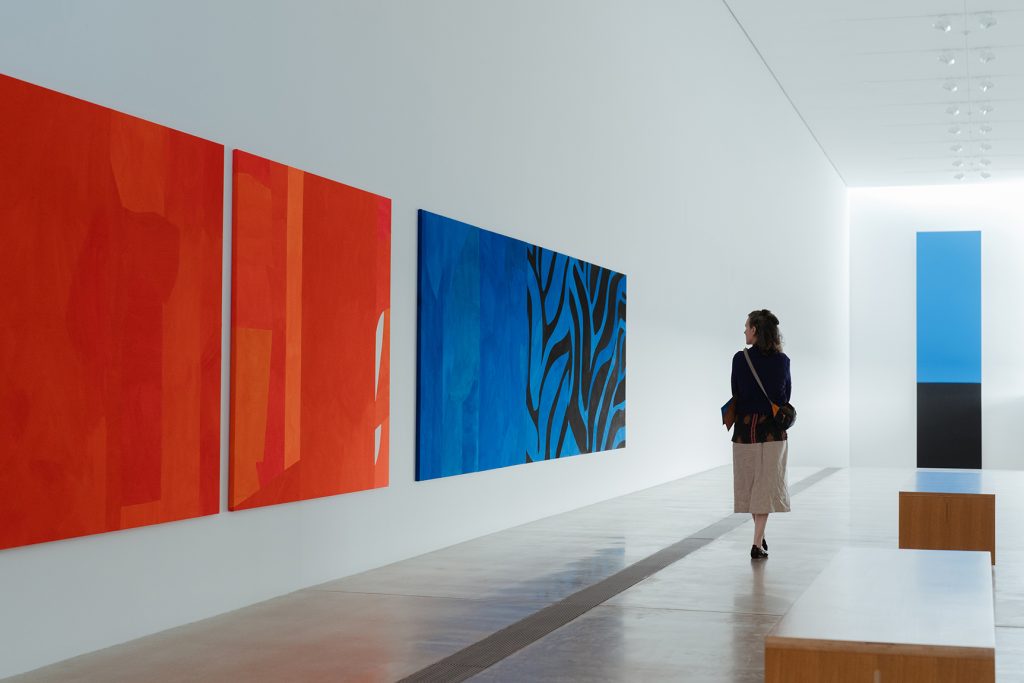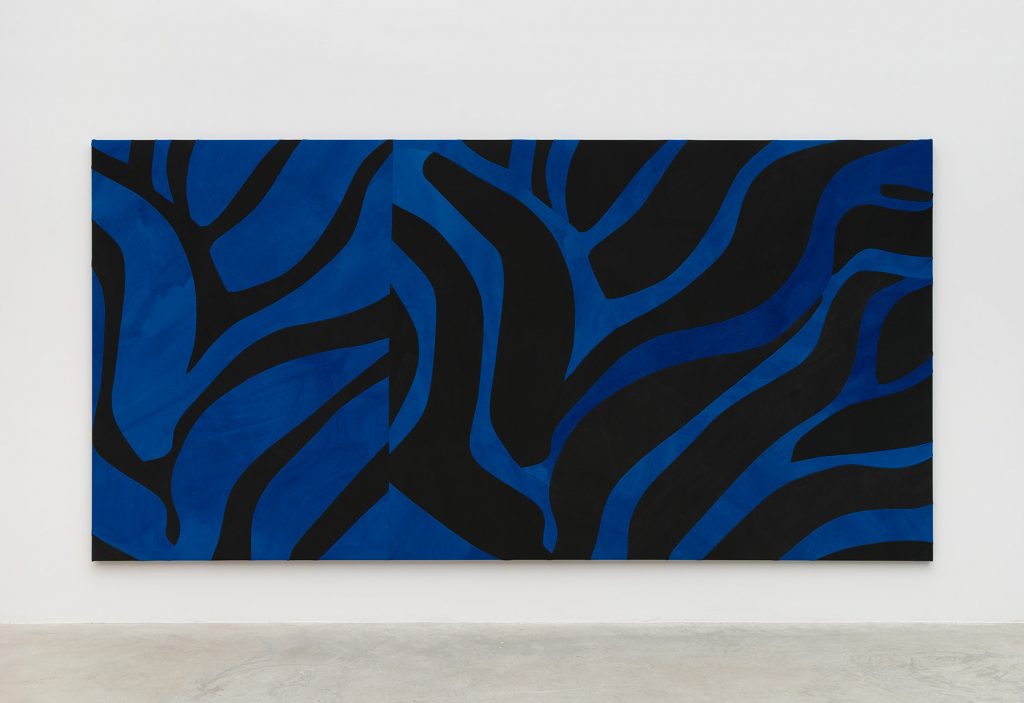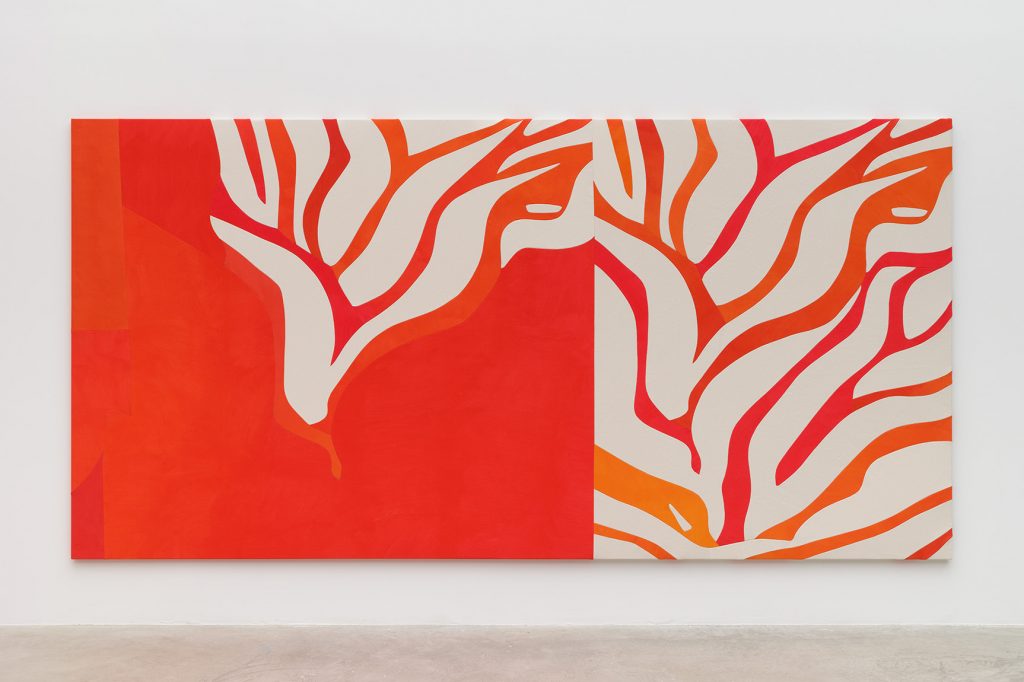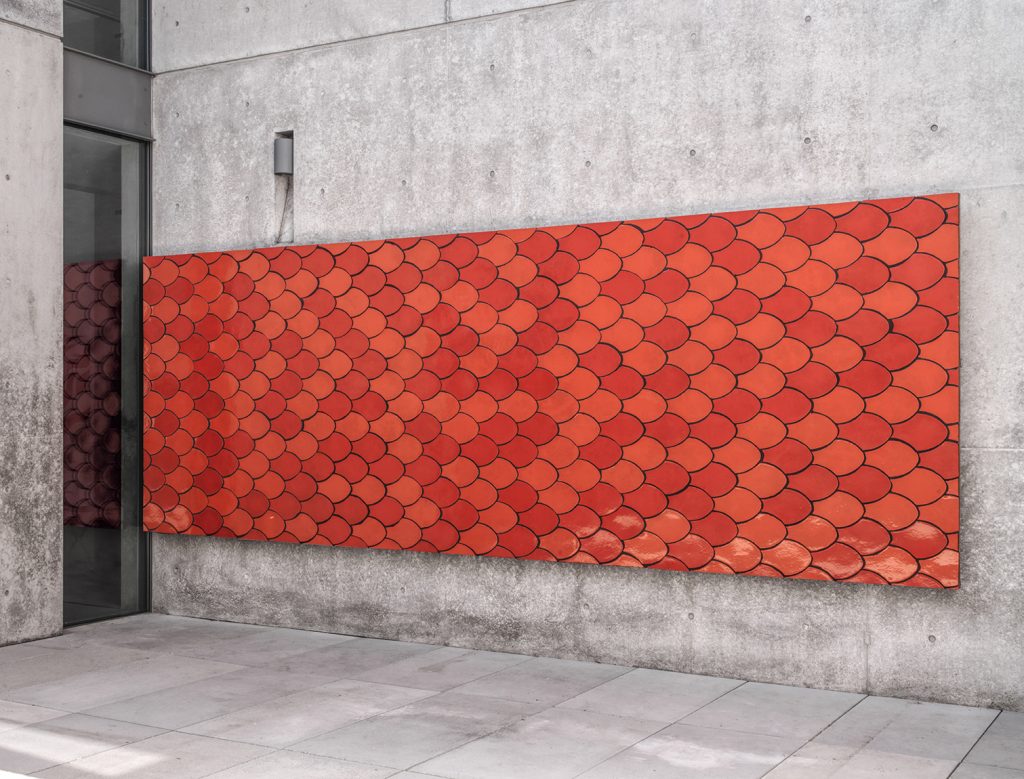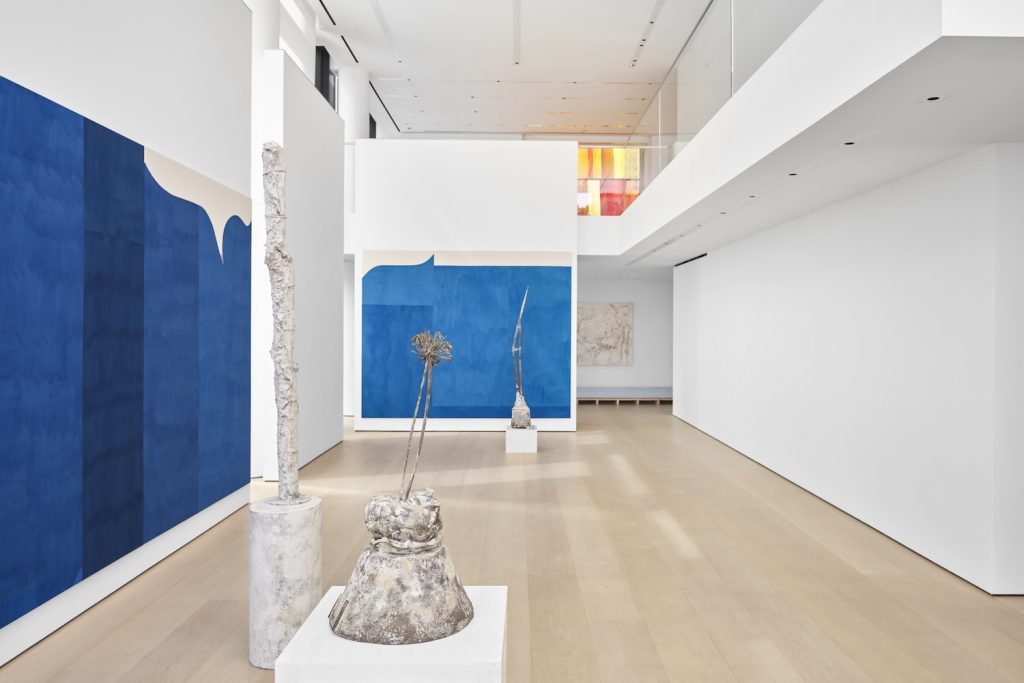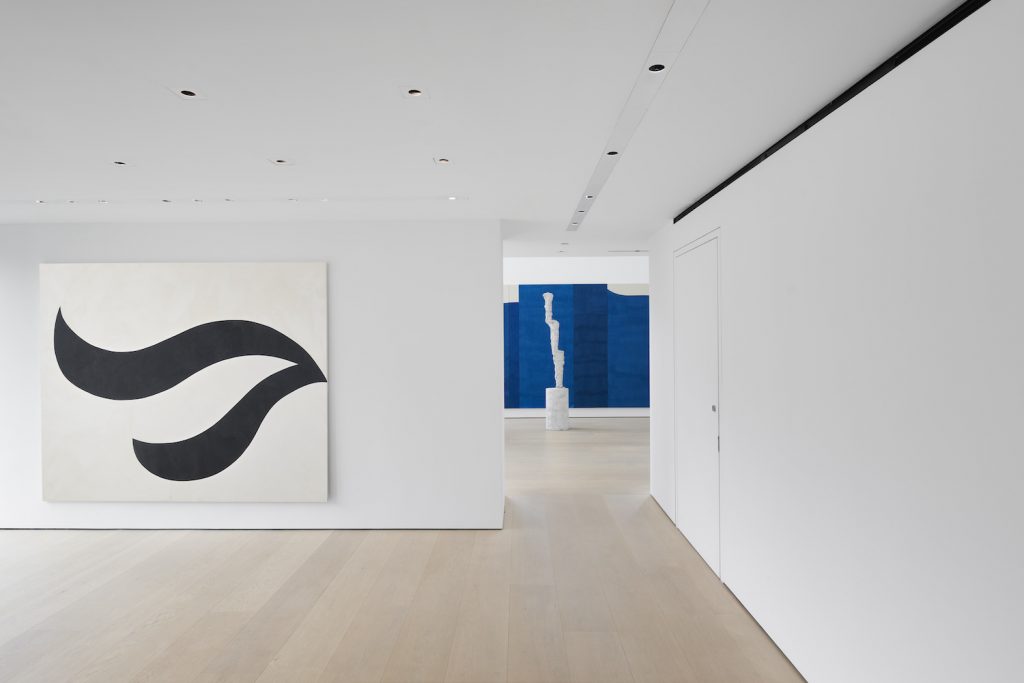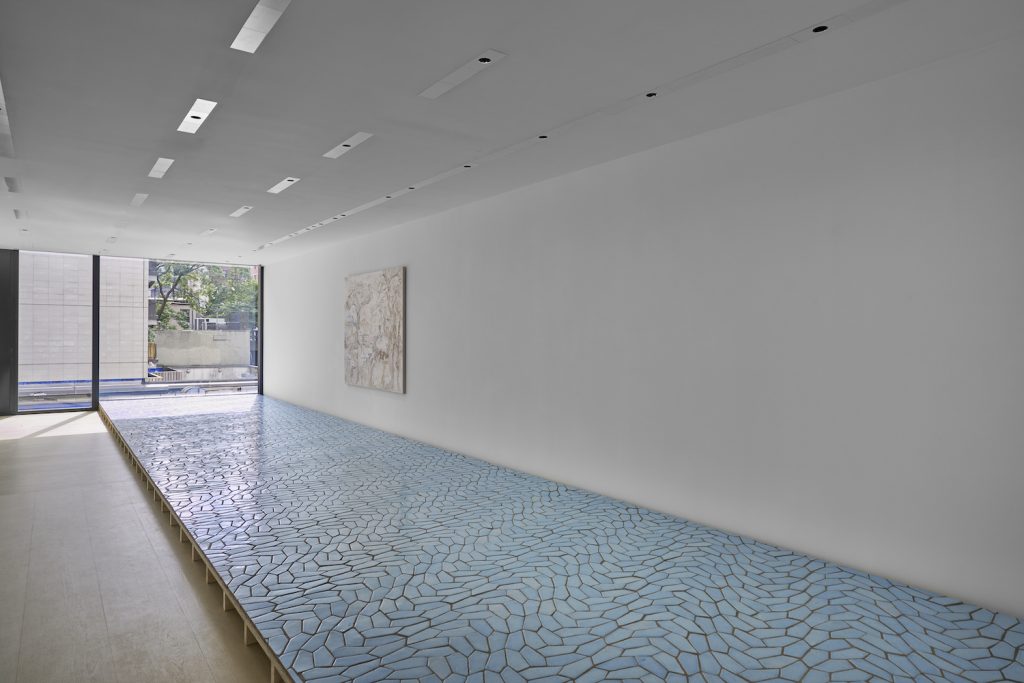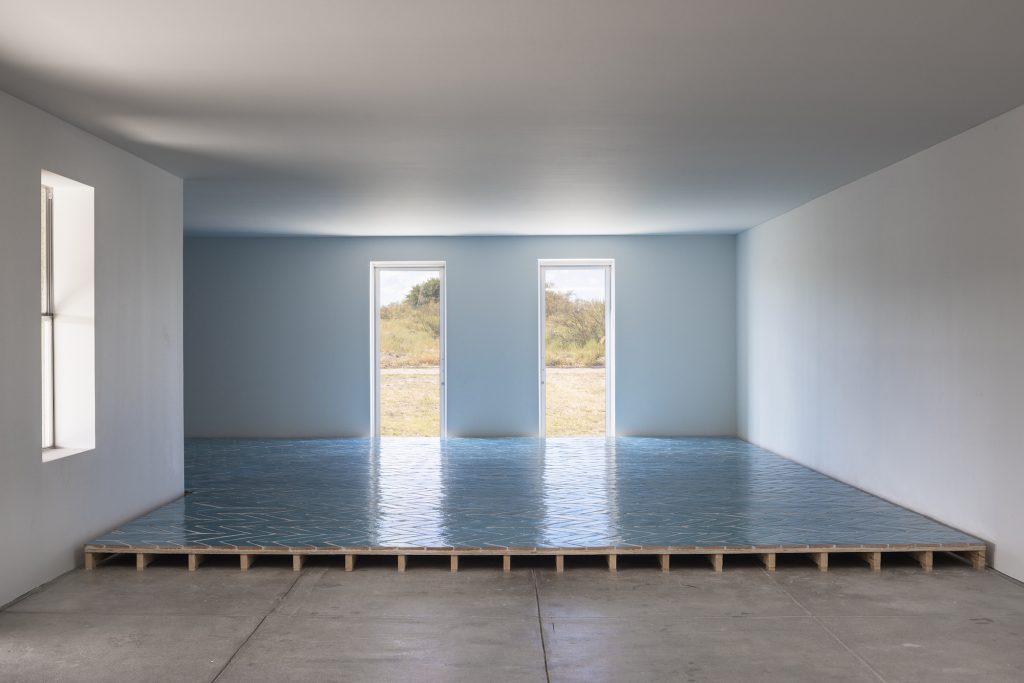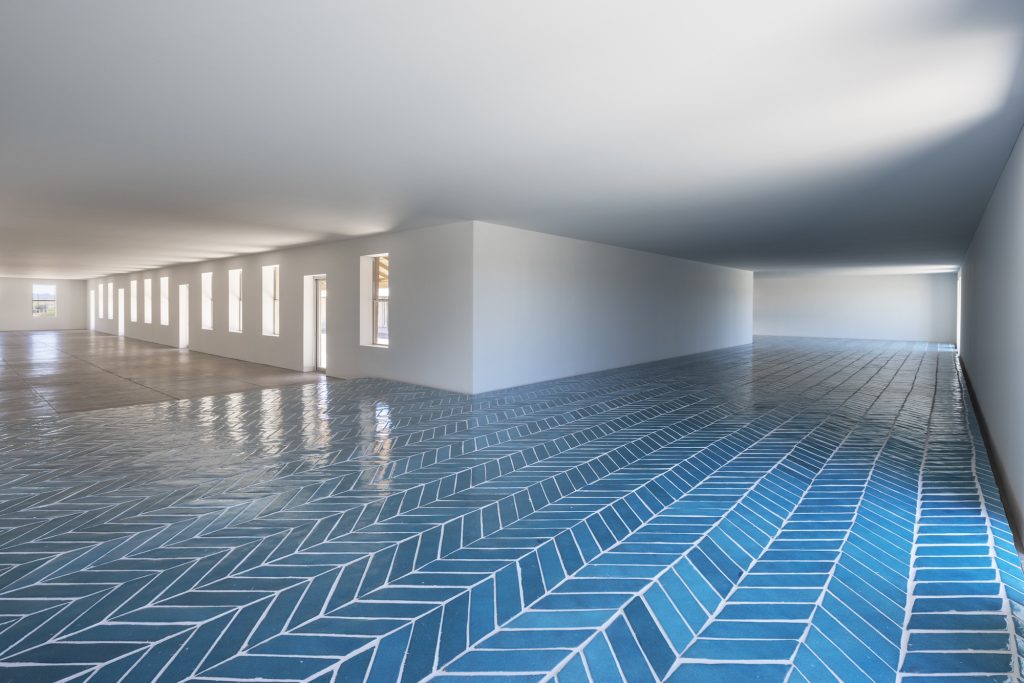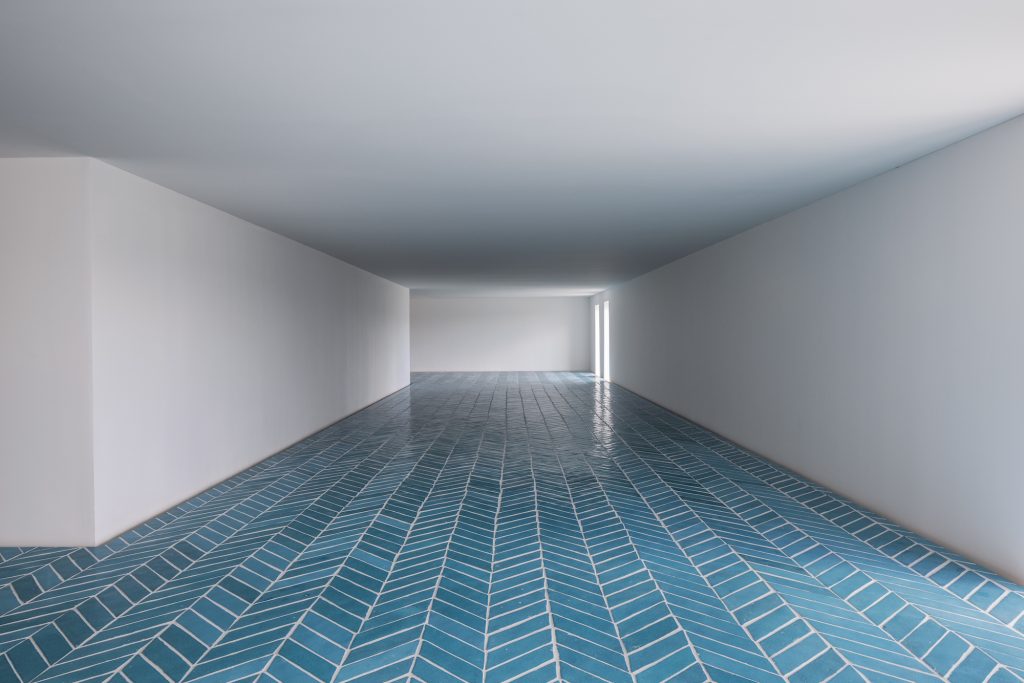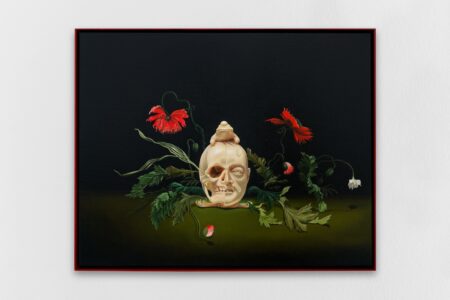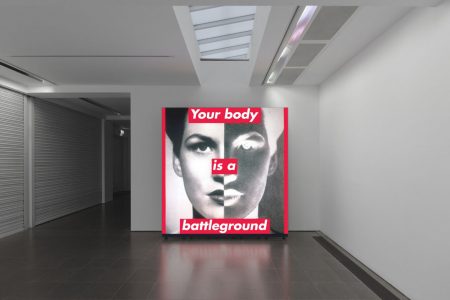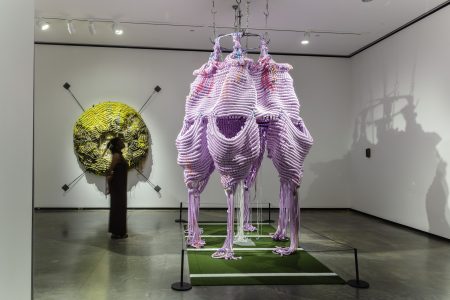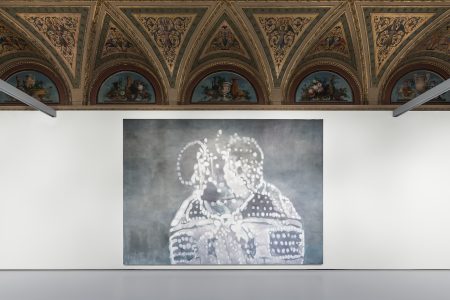Sarah Crowner: Around Painting
Brooklyn-based artist Sarah Crowner challenges us to expand our ideas about what painting is and what it can be. Through her work, which includes cut and sewn canvas paintings, ceramics, installation and theatre sets, she plays with colour, form and shape, creating a link between the visual and physical experience of art and art making.
Movement and physicality are essential components to Sarah Crowner’s artistic practice. In her ‘cut and sewn paintings, a process she began doing in 2009, canvases are stretched, painted, cut, forms are turned, twisted and played with to find the rhythm and relationships among them. “While at first glance people might see the colour and graphic aspect to the paintings, on closer inspection they see that it is has a joined line, that it is a physically constructed object,” she explains. This interest in wanting the viewer to engage more with the work led Crowner to create a raised wooden platform for an exhibition of her paintings in Brussels in 2011. “It was a simple idea that I wanted to create a kind of theatrical space within in a gallery but not have a performance, just have the paintings be hanging as the backdrops and the viewers become like the performers,” she says. This encounter activated the space, reinforcing the understanding of a body making the work and experiencing it as well.
Interested in creating a “painting that you could walk on,” she made her first large-scale raised ceramic platform in 2014 following a residency with Ceramics Suro in Guadalajara, Mexico. “[I was] thinking of the tiles as a form of painting because they are colour, form, gesture, they are handmade, all the things that go into regular painting but I wanted a painting that you could walk on,” Crowner notes. Her ceramic floor and wall installations apply the same considerations of colour, shape and movement as her canvases, further developing connections to design and architecture as well.
In 2023, Crowner opened three major exhibitions across the United States, each of which, in its own way, reflects a conversation with an iconic 20th century artist and the architectural space of the exhibition. At the Pulitzer Art Foundation in St. Louis, Missouri, Crowner’s installation, Around Orange, is a direct response to Ellsworth Kelly’s monumental wall sculpture, Blue Black, which is on permanent display at the museum. Kelly (1923-2015), who was known for his exuberant play of colour and shape is a perfect artistic partner for Crowner to engage with. Curated by Stephanie Weissberg, the exhibition includes three installations; On the exterior wall of the entrance courtyard is a 17-foot long by 6-foot tall tile mosaic composed of handmade, red and orange glazed terracotta tiles made in collaboration with Ceramics Suro. At first look, the bright pop of orange fills the eyes, yet because they are handmade, the tiles have softly varying tones and even textures that lends depth and movement to the installation. Inside, viewers step up onto a birch wood platform, designed by Crowner, to experience an intimate look at two smaller works by Kelly: a white-on-white collage of curves, and a painting titled White Plaque: Bridge Arch and Reflection (1956). Further into the space, several large canvas of red and orange or deep blues and blacks, that measure a total of 75-feet in length, are placed on a long wall that leads to where Kelly’s Blue Black painting can be seen. Crowner’s bold red and orange are the colour contrast to the deep blues of Kelly and the flow of her paintings stand against the strict verticality of his painting, creating a playful exchange between the two artists.
At the Hill Art Foundation in New York City, Crowner collaborated with the foundation to make an exhibition titled The Sea, the Sky, a Window, that places site-specific works in dialogue with sculptures and paintings from the Hill Foundation, as well as a small selection of loaned works. At the heart of the project are the three paintings in shades of blue by Crowner with sculptures by Cy Twombly (1928-2011). While Crowner states that the paintings “serve as a backdrop to Twombly’s work,” as she wanted to make the installation like a theatrical setting, in fact, the exhibition feels more like a dance between the two artists, offering a place to move around and engage with each of them together and separately.
At the Chinati Foundation in Texas, her exhibition, Platform (Blue Green Terracotta for JC), 2022, consists of a large floor installation of turquoise blue ceramic tiles that creates an unexpected wash of colour amidst the muted desert landscapes and minimal architecture of the foundation. Crowner learned through the curator, Ingrid Schaffner, that John Chamberlain (1927-2011), whose work is part of the Chinati Foundation’s permanent collection, once had the idea to design a swimming pool for the foundation but that it was never realised. Intrigued by this story, Crowner’s installation is a kind of homage to Chamberlain’s idea. The room features several of Chamberlain’s compacted metal wall sculptures to establish a dialogue of colour, form and texture between the artists’ work, while also putting forward the ongoing considerations of what painting can be.
“I have always been thinking about artists – researching and looking at art, going to the library and reading… but these are the first shows where I have actively dialogued with the artists and made work in relationship with their work,” Crowner explains. This conversation and processing of art history connects Crowner to the history but results in defining her own distinctive, contemporary voice.
This spring, Sarah Crowner will have her first solo exhibition with Luhring Augustine in New York and will release a new book: Sarah Crowner: Serpentear, that dives into over a decade of the artist’s wide-ranging practice.
@sarahcrowner
www.luhringaugustine.com
www.nordenhake.com
www.pulitzerarts.org
www.chinati.org
www.hillartfoundation.org
Cover photo: Portrait of Sarah Crowner at the Pulitzer Arts Foundation. Photography by Virginia Harold, © Pulitzer Arts Foundation
All images: © Sarah Crowner; Courtesy of the artist.
